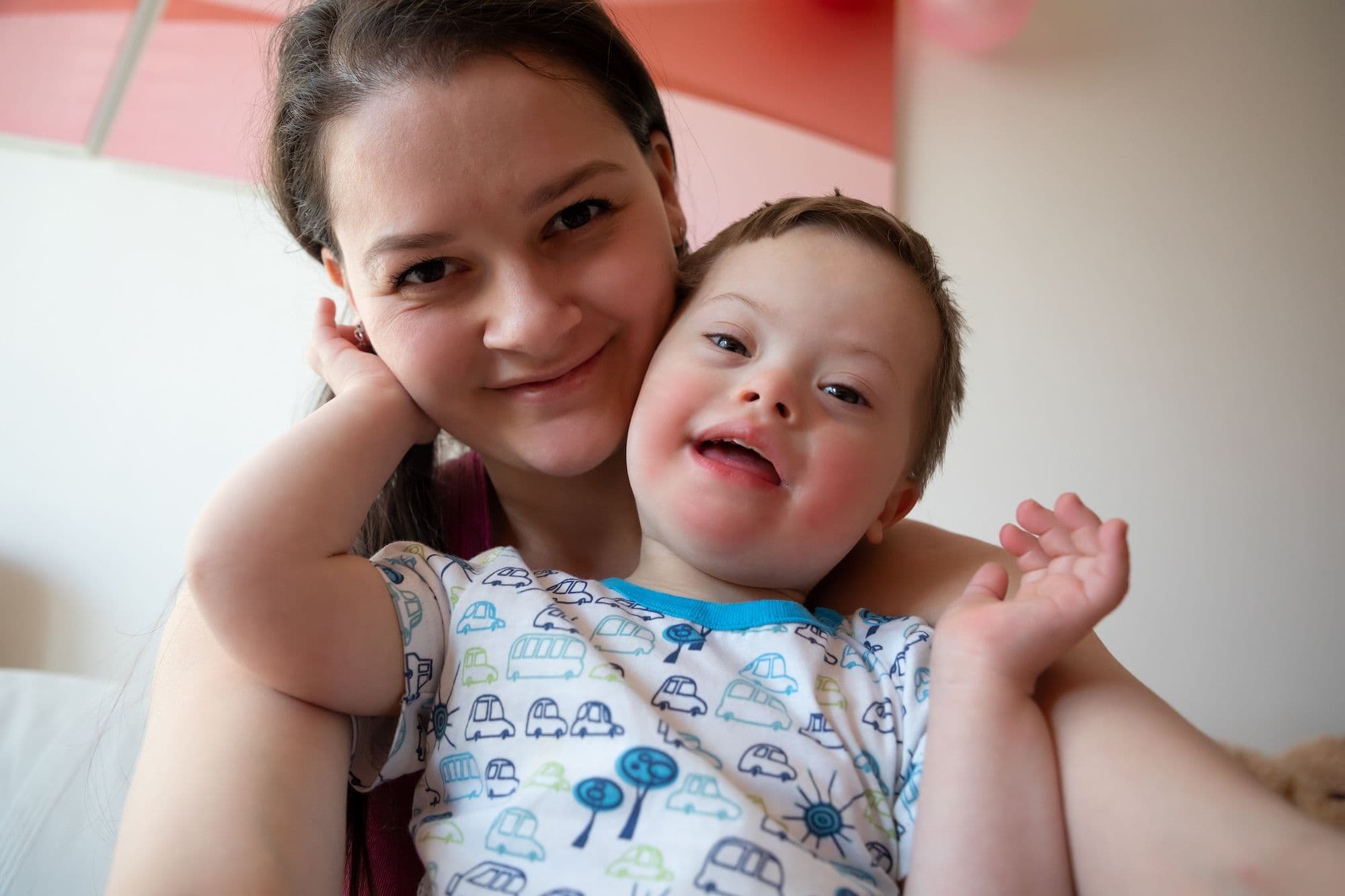Down Syndrome (Trisomy 21)
Fetal Malformations
Obie Editorial Team

Trisomy 21
Let's talk about Trisomy 21, the most common scenario, making up about 95% of Down syndrome cases. This happens when each cell in the body has three copies of chromosome 21 instead of the usual two. We'll often see 47 chromosomes in total, compared to the typical 46. Knowledge of this condition allows us to recognize its traits and provide the right support.
Translocation
In about 4% of Down syndrome cases, translocation is the cause. Here, a piece of chromosome 21 attaches itself to another chromosome, typically chromosome 14, during cell division. While the total chromosome count remains at 46, it's that additional section of chromosome 21 that leads to Down syndrome traits. Understanding this helps in crafting specific support strategies for these individuals.
Mosaicism
Mosaicism is a less common scenario, occurring in about 1% of cases. It results when some cells have the standard 46 chromosomes, while others have an extra chromosome leading to 47. This is a mix, and identifying these individuals means we can tailor our approach to their unique experiences and needs.
Down Syndrome: Additional Chromosomal Material
The extra genetic material present in Down syndrome is what modifies developmental processes, leading to the syndrome's recognizable traits. Awareness of Trisomy 21's prevalence helps focus resources and support for the largest affected group.
Let's Talk Risk Factors
Advanced maternal age is an important consideration. For women over 35, the likelihood of having a child with Down syndrome increases to 1 in 400, which escalates to 1 in 35 for women over 45. Remember, though, that while younger women statistically give birth to more children with Down syndrome, this is mostly due to the higher number of births overall. Additionally, if you’ve had a child with Down syndrome, your chances increase for future pregnancies as well. This knowledge aids in pre-planning and informed decision making.
Recognizing Symptoms
Children with Down syndrome often present with distinct physical and developmental features. These can include a flat facial profile, upward-slanted eyes, shortened neck and fingers, and a smaller head size, accompanied by muscle tone that may be less toned than average. The degree varies tremendously, so let's focus on supporting development at their pace, recognizing that their journey is unique to them.
The developmental journey also includes learning and social milestones. Delays might appear as:
- Slower learning curve
- Episodes of agitation
- Brief attention spans
Diagnosing Down Syndrome
When it comes to diagnosis, potential effects on internal organs must be considered. Increased vigilance is needed for conditions such as:
- Heart birth defects
- Dementia
- Vision impairments
- Gastrointestinal concerns
- Joint disorders
- Constipation
- Hypothyroidism
Addressing Treatment Options
While there isn’t a definitive cure, individual health challenges can be met with customized medical interventions. In some cases, surgeries may be necessary, especially for specific organ-related issues. The combination of ongoing healthcare and supportive interventions can make a significant difference.
Considering Down Syndrome and Pregnancy
Importantly, Down syndrome does not typically impede a woman's ability to conceive, maintain a pregnancy, or give birth to healthy babies. However, women with Down syndrome should be aware of the increased risk associated with sexual exploitation, which emphasizes the importance of safeguarding and support networks.
Projecting Life Expectancy
With the right medical care, specialized education, and life skills training, individuals with Down syndrome can lead fulfilling lives. Life expectancy is also on the rise. Continuous medical attention and dedicated support can effectively address the physical conditions associated with Down syndrome, setting the stage for a life that thrives.
Remember, the path is as unique as each individual. Equip yourselves with knowledge and use it to create informed, compassionate strategies that lead to enriched experiences.
Read More









